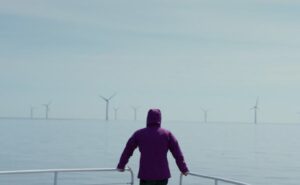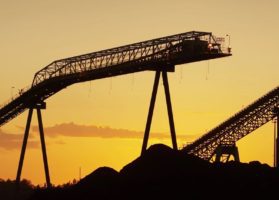Some of Australia’s oldest wind farms – like Crookwell, the first grid-connected wind farm in Australia – are entering their golden years, while others are churning away in middle-age.
Many of these ageing wind farms are approaching the limit of their lifespan, with the average wind-farm typically functioning for around 20 to 30 years – though some may be able to cling on longer by monitoring for component failures and performing preventative maintenance.
Inevitably, time will eventually run out for older farms, meaning they’ll need to be decommissioned and disposed of.
Approximately 85 to 95 per cent of a wind turbine’s mass is recyclable thanks to well-established techniques in steel and concrete reprocessing.
But the remaining five to 15 per cent of the turbines are made of composite materials for which recycling techniques are in their infancy. As of 2023, a total of 31 wind farms in Australia were more than 15 years old, meaning the question of what to do when these turbines inevitably reach end-of-life is becoming more pressing.
To that end, Spanish renewable energy infrastructure company Acciona Energía has announced the launch of a new initiative to explore opportunities for wind turbine blade recycling in Australia.
The initiative will see the company – which has 2,100 MW of renewable projects either in operation or construction in Australia, including the largest single wind project at MacIntyre in Queensland – partner with local teams of researchers to explore different ideas to help build out a functioning circular economy in wind energy.
Current techniques for recycling wind blades include mechanical recycling, which shears the blades into smaller pieces that can be used in products like cement or industrial plastics. This process is commercially viable but doesn’t recover individual fibres.
Another technique is called thermal recycling, or pyrolysis.
In Pyrolysis, the composite material that makes the turbine blades is heated in an anoxic environment, breaking down the organic components of the material allowing the inorganic fiberglass in the material to be recovered and repurposed. US company Carbon Rivers has already demonstrated this process at scale.
Chemical recycling, or solvolysis, works similarly but uses chemical solvents instead of heat to break down the composite materials, again enabling the recovery of the fiberglass component.
Acciona has already explored methods for blade recycling at its Waubra wind farm, a 192 MW, 128-turbine project that straddles the Sunraysia highway 35 kilometres north-west of Ballarat, Victoria.
There, it demonstrated the mechanical breakdown of a decommissioned blade into a particulate that can be used as raw material for product manufacture.
In Europe, the company partnered with fashion brand El Ganso to design sneakers with soles made of recycled blade material, and it integrated that same material into the torsion beams of solar trackers at a solar plant in Extremadura, Spain.
And in May last year the Government of Navarra, an autonomous community in Spain’s Basque Region, declared Aacciona’s Waste2Fiber plant, a planned turbine blade recycling facility, a “project of regional interest”.
The plant, which should be operational by 2026, will use pyrolysis to breakdown the composite materials in the blades without using combustion, and is set to process up to 6,000 tonnes of material per year.
“The blade material we have created could be used to create a vast range of products – everything from children’s playgrounds and koala crossings for highways, to flame-resistant clothing for firefighters, homes for butterflies and artificial reefs,” said Acciona’s head of brand and marketing in Australia Caroline Pinter.
“The opportunities are endless, and we’re excited to see the creative concepts that will come from innovators across Australia who want to help us advance the circular economy within renewables.”








